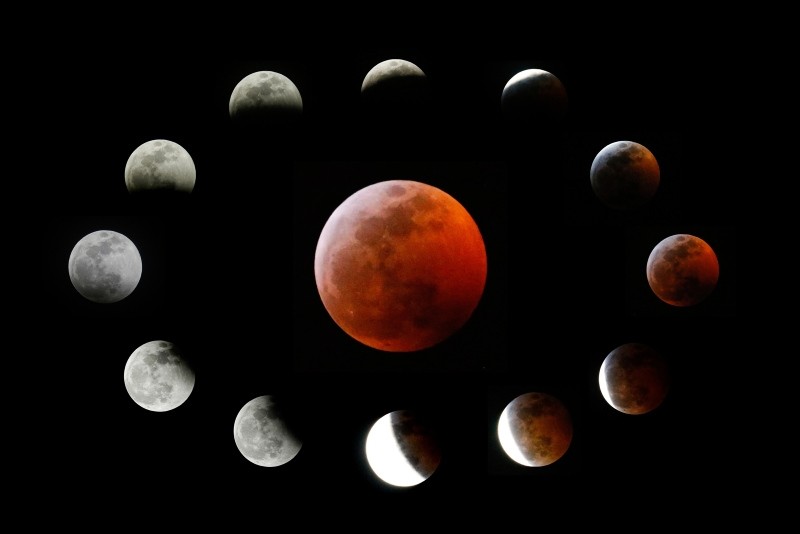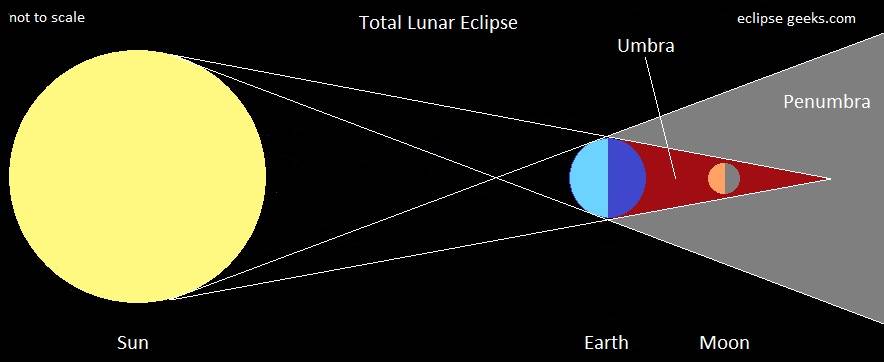A lunar eclipse occurs when direct sunlight does not reach the Moon because Earth comes in between the other two (say the sun and the Moon). During a total lunar eclipse, Earth completely blocks the sunlight from reaching the Moon. The only light that the lunar surface reflects is in fact the refracted one by Earth’s atmosphere. That is why moon appears red due to its reflected light’s color. Due to this reddish color, a totally eclipsed Moon is also called a ‘blood moon’ by some. Lunar eclipse is also called Chandra Grahan in India and Nepal.
Know the Moon:
The Moon is a cold and have rocky body. It has a diameter of about 2,160 miles (3,476 km). Moon does not have its own light but it shines as it receives sunlight and reflects the same from its surface. The Moon orbits Earth every 29 and a half days approximately. Moon is the natural satellite of the Earth. As it circles our planet Earth, the changing position of the Moon with respect to the Sun causes it to undergo a series of phases.
Mechanism involved in Lunar Eclipse:
An eclipse of the Moon (or lunar eclipse) can only occur at Full Moon, and that too when the Moon passes through some portion of Earth’s shadow. That shadow is actually composed of two cone-shaped components, one posited inside the other. The outer or penumbral shadow is a zone where the Earth blocks part of the Sun’s rays from reaching the Moon. In contrast, the inner or umbral shadow is a region where the Earth blocks all sunlight from reaching the Moon. Based on this happening, astronomers recognize three basic types of lunar eclipses: Penumbral Lunar Eclipse, Partial Lunar Eclipse and total lunar eclipse.

Basic Types of Lunar Eclipse:
1. Penumbral Lunar Eclipse: The moon passes through Earth’s penumbral shadow. These events are very subtle and in fact are hard to observe.
2. Partial Lunar Eclipse: A part the Moon passes through Earth’s umbral/inner shadow.These events are easy to see through the unaided human eyes.
3. Total Lunar Eclipse: The entire Moon passes through Earth’s umbral shadow.These events are quite striking because Moon’s vibrant red color appears on its surface during the total phase (totality) often called ‘Blood Moon’.
How to watch a lunar eclipse:
Lunar eclipses make favorite and easiest ‘sky watching’ events since time immemorial. One does not need anything such as telescope or any other special equipment to see lunar eclipse. However, binoculars or a small telescope add more details in the lunar surface while doing ‘moon-watching’ particularly during an eclipse.









Comment